When crops are cultivated in a Polyhouse, they are grown beneath a specific polythene sheet, which allows them to grow under-regulated climatic circumstances. The glass was traditionally used to wrap timber frames in traditional greenhouse construction. Plastic technology has made it feasible to substitute glass with plastic material. Indian subtropical and tropical climates are more suited to polyhouses.
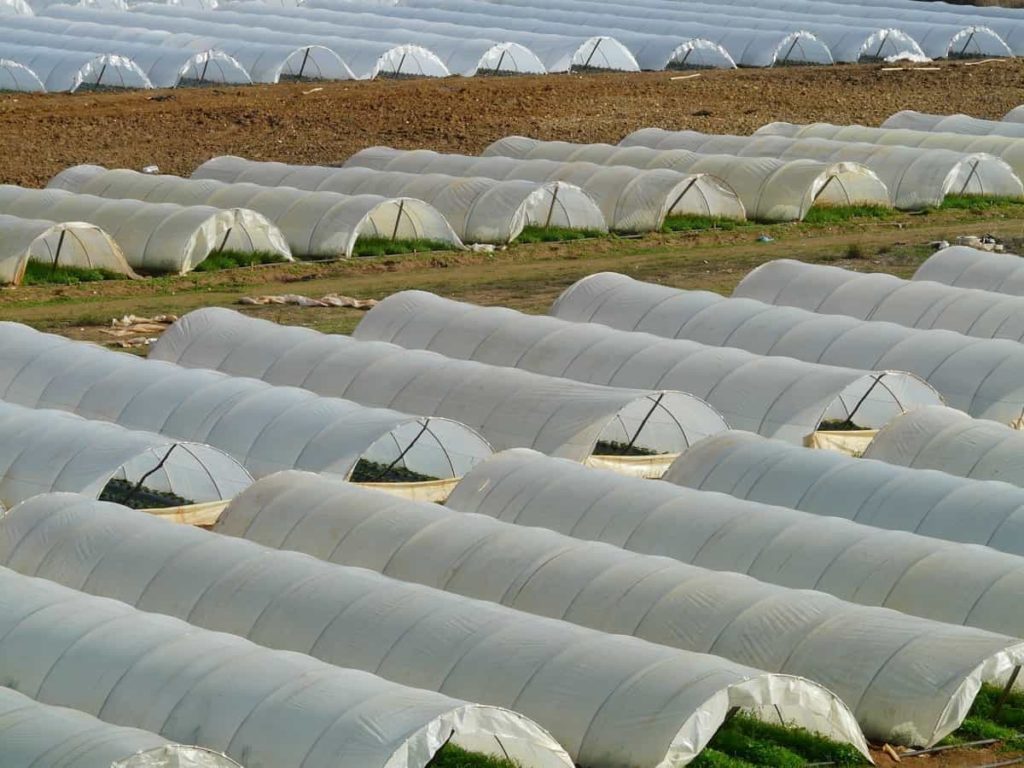
Plastic is gripped to an aluminium frame in modern playhouses constructed on G.I. steel frames. High-quality 200 microns thick white plastic film is used for covering, with a three-year warranty against UV and weather damage. Watering a polyhouse is often accomplished via a drip irrigation system. Let’s check out a way of earning 85000 per month from Polyhouse cultivation.
Advantages of Polyhouse farming
The polyhouse protects precipitation, radiation, rain, wind, and other climatic variables. As a result, it generates a microclimate around the crops that promotes maximum output and excellent development. Greater levels of CO2 are also provided by Polyhouse, which means that yields are much higher than those achieved in the open field growing.
Polyhouse settings allow you to grow plants that would otherwise be impossible to grow in that climate zone. For example, the Indian plains are home to strawberry farming. Polyhouse crops may maximize profits while occupying a small amount of land. The number of manual tasks, the reliance on human labor, and the total cost of human labor decrease when automation reaches its maximum degree.
Disadvantages of Polyhouse farming
The cost of production is quite expensive, and a large sum of money must be put up as a down payment. In addition, Polyhouse farming is a high-maintenance activity that needs constant attention. Polyhouse operations need a well-trained supervisor and a team of experienced workers to carry out the day-to-day tasks. As much as polyhouse farming relies on chemical fertilizers and pesticides, there is little room for organic farming.
In case you missed it: Organic Turmeric Cultivation in Polyhouse (Haldi Farming)
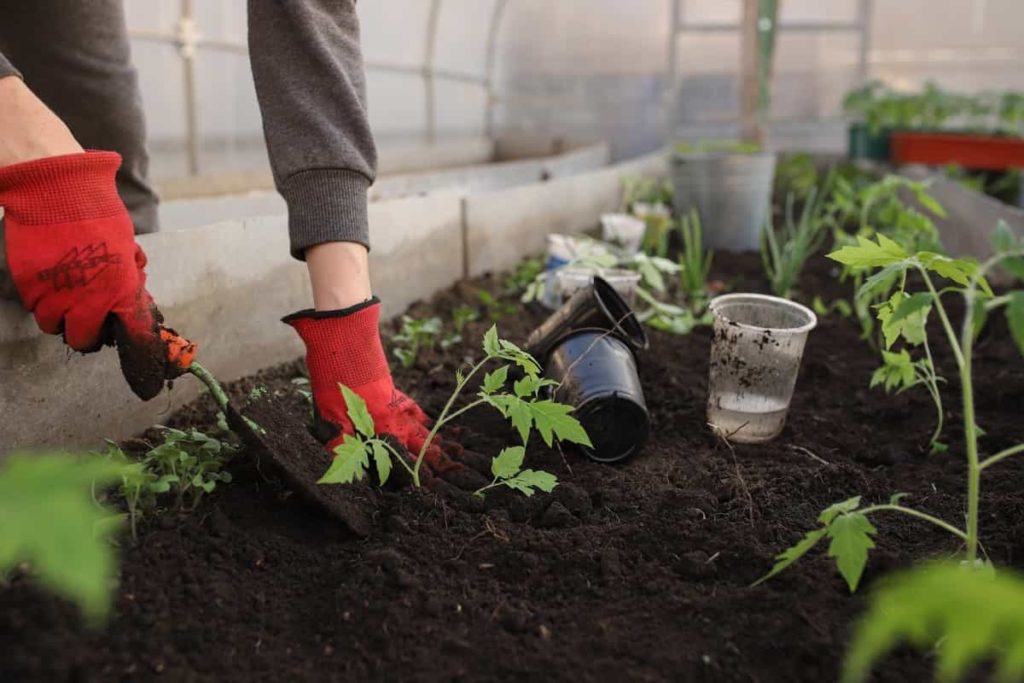
Things to know about Polyhouse farming
It’s important to note that polyhouse farming is supported by the government of India, state governments, local horticulture training institutions, and more. Therefore, before building a polyhouse, one must provide a crop-specific ‘Project report’ for polyhouse farming. All project components, including technical, financial, and marketing aspects, should be included in this report.
Agricultural banks and financial institutions like NABARD can provide you with examples of bankable projects. To get bank financing and government subsidies, a project report is needed. The project should not go further without conducting a complete technical study, financial analysis, and marketing survey.
Earning 85000 per month from Polyhouse cultivation
The success story of Mr. Ramesh
Two years back, Mr. Ramesh of Yadadri district wanted to enter the agriculture industry. He used to work for a real estate agency and was tired of his job, wanted to build a venture of his own. So, after thorough thinking, he tried to enter the agriculture industry since it was his childhood dream. He used to be under a lot of pressure when he was working for his previous job, and he wanted to do something to earn money, and at the same time, he wanted to be satisfied with what he was doing.
This leads him towards cultivating vegetables. He spent two months investing in the agricultural techniques he wanted to cultivate his plants. Even though he almost chose to practice conventional farming methods at the start, he decided not to after some recommendations from farmers that he knew. When he was searching for ideas, he attended a summit where they described the importance of polyhouse farming.
In case you missed it: Stevia Farming in Polyhouse, Cultivation Practices
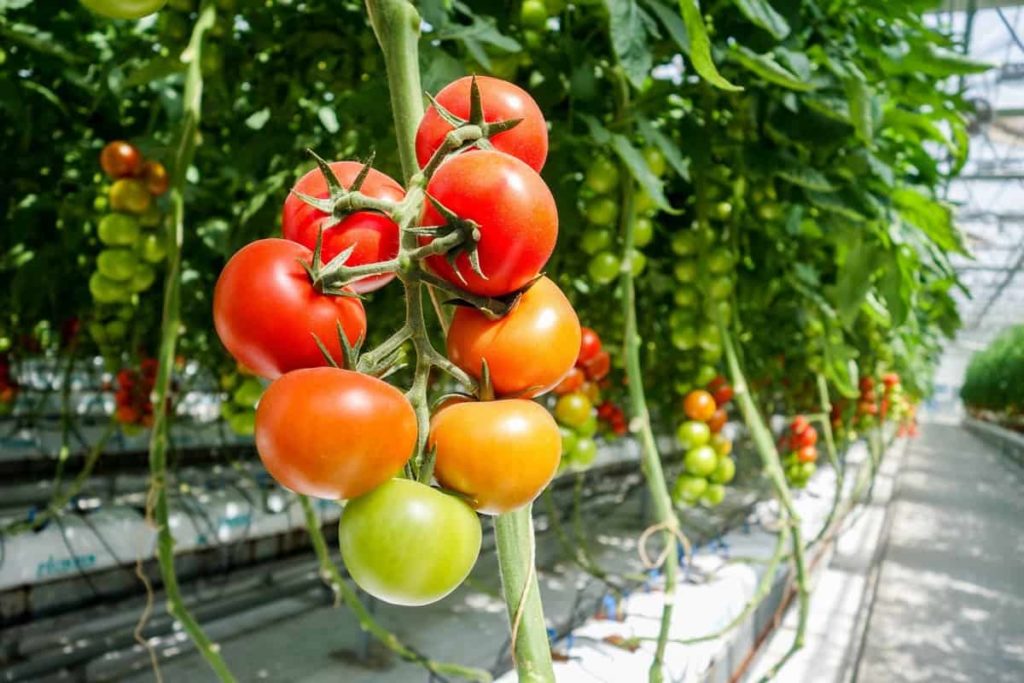
This attracted him. He then learned about polyhouse farming from a professor at Osmania University. After a thorough study, he decided to cultivate plants by this method. Let us get into the details of his polyhouse farm.
Construction of Mr. Ramesh’s polyhouse
At first, for the construction of his polyhouse, he wanted to give it as a contract to a private company. But he realized that it was going to cost him very much. He was puzzled and didn’t know what to do. At the same time, he contacted a friend of his about this issue, and he then recommended Mr. Ramesh to a friend of his. Mr. Ramesh learned that it is possible to build a polyhouse with bamboo stalks from him. He then immediately started the process.
He ordered bamboo stalks from Maharashtra and gathered some laborers from Tamil Nadu who could do this work. Bamboo stalks can be in many varieties, and he chose the strongest ones to support his polyhouse. Mr. Ramesh said that the bamboo stalks could not last more than a year, and for them to last more than a decade, they should undergo the treatment and curing process. While they undergo the treatment and curing process, the starch, insects, and some other useless matter are extracted from these and stalk.
After that, these stalks should be dried in shadow (the sun should not fall upon them at any cost) for at least three weeks. This process can help the bamboo tree acquire the strength equal to a steel rod and can last a few decades, says Mr. Ramesh. Using these bamboo stalks, you can design the poly house the way you want, he added.
He constructed his poly house in half an acre and used green meshes from the support of bamboo stalks to cover his plants. this can help control the environment inside his polyhouse and aids in fast plant growth. It cost him nearly 12 lakhs to construct his bamboo polyhouse on a half-acre. This is significantly less. If you want to build a polyhouse using steel rods, it can cost you nearly 25 lakhs, says Mr. Ramesh.
In case you missed it: Polyhouse Garlic Farming (Vellulli), Cultivation Practices
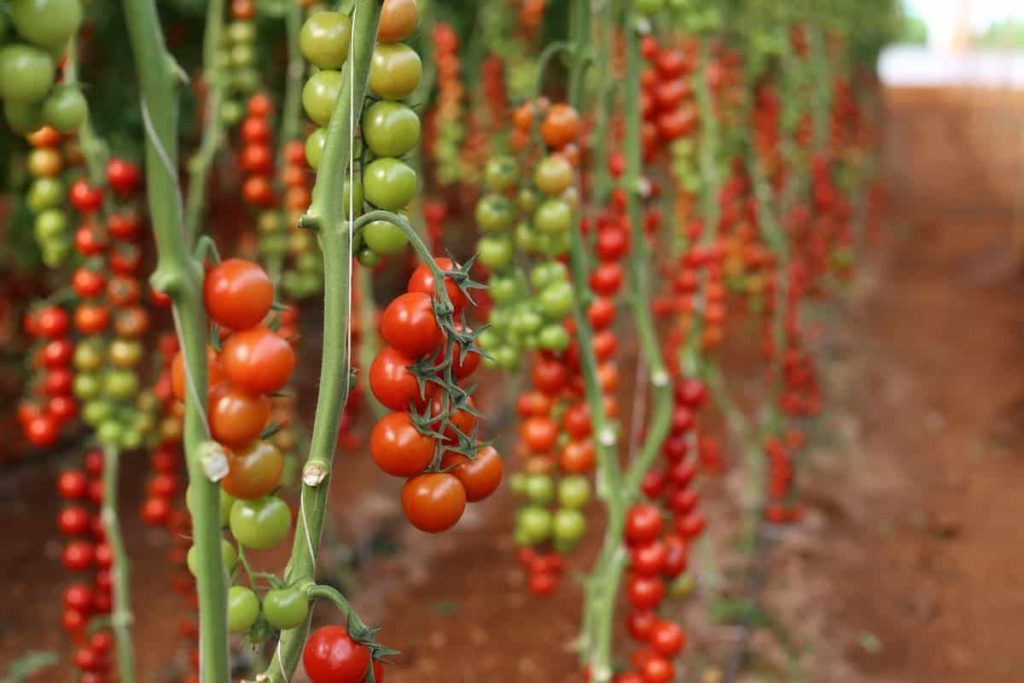
He prepared his beds after making his soil rich in nutrients. He says he used vermicompost and other organic fertilizers to make his soil rich in nutrients that the plants need. This helps him get better and high-quality yield, he added. When using fertilizers in polyhouse, use only organic fertilizers. If you use any store-bought chemical fertilizers, the soil will not support the plant growth after harvesting your crops two times.
Selection of plants according to Mr. Ramesh
Mr. Ramesh cultivates tomatoes in his polyhouse. He selected tomatoes since they are easy to grow and manage, and there is also a constant demand for tomatoes in the market. So he started with 1500 plants in his polyhouse.
Growing tomatoes in the Polyhouse according to Mr. Ramesh
He planted the tomato seedlings with an inch gap between each seedling. He says this is the ideal gap for growing tomatoes in the polyhouse. Then, Mr. Ramesh explained a trick to get a constant yield. He suggests the farmers not plant all the seedlings at once when asked about it. Instead, you must give ten days gap to plant each seedling row. So, if you plant one row of seedlings and wait for ten days to plant another row, you can harvest tomatoes ten days once when the time comes.
This can help you harvest the tomatoes consistently, which can also help produce fresh and quality yields. Pollination is essential for plants to grow. It is true that in a polyhouse, it is hard for plants to undergo natural pollination. Many experts suggest that you should use pollinating insects such as bees in the playhouses, for the plants to go through the pollinating process for a better and quality yield. But on his farm, Mr. Ramesh chose the tomato, a self-pollinating plant.
Self-pollinating plants are the plants that undergo pollination by air circulation. For this, Mr. Ramesh designed his polyhouse so that sufficient air could enter the polyhouse for pollinating process. This became very useful for him, and he says that his plants undergo pollination very well by the design of the polyhouse he constructed. He says he is getting higher and better quality yield by this.
In case you missed it: Chrysanthemum Farming in Polyhouse for Maximum Profits
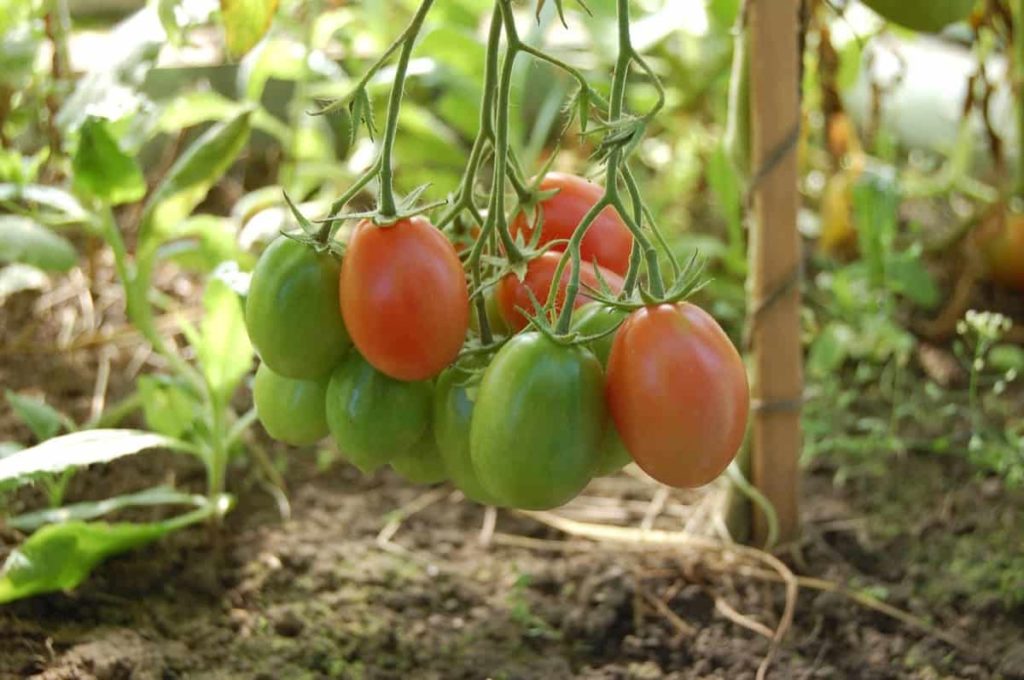
Even though poly house keeps most insects and pests at bay, some insects can be helped. For avoiding these insects, you have to spray neem oil and a waste decomposer in your poly house every week. Neem oil can help your plant develop disease resistance and keeps many insects far from the plants. In addition, simply neem oil makes your plants repulsive to the pests and microorganisms.
In polyhouse, you have to use a drip irrigation system to water your plants. This water system aids in less water wastage and also you can water the plants the amount they need. The drip water system can be easy to manage and monitor. Prepare a schedule for watering your plants and follow this schedule thoroughly. In the drip water tank, use a certain amount of Asafoetida powder and dump some waste decomposers. This can protect the plants from fungal attacks while providing the plants with micronutrients.
Mr. Ramesh installed trellises on his poly house farm. He says that the tomato plants, after reaching a particular growth, can’t stand due to the weight of the tomatoes. For this nylon, threads are tied to the roof of the poly house to which the plant should be attached. Along with trellises, you should also consider staking your plants. Buy stacks from the market and fix them in the mud along the stem. After this, tie the stem with a stack to support the stem and the plant.
You can help your plants grow to more than 7 feet by following these procedures, says Mr. Ramesh. The more height the plant grows, the more the yield. He gets nearly 600 to 650 kgs of tomatoes while harvesting his polyhouse tomato field, says Mr. Ramesh. He harvests his tomatoes once in three days the whole year. Before harvesting his plants, Mr. Ramesh treats his plants with sour curd. This can help them with easy harvest and keep them off tiny pests.
It is better to follow the crop rotation process in polyhouse. Mr. Ramesh says that the crop rotation process can help you get huge profits and high yields. And also, the soil receives rich in needed nutrients for the next plants to grow. Also, you can experiment with your polyhouse with different vegetables. For example, take 1000 plants and experiment with them by cultivating other fruit, and if the results are great, you’ll get high profits.
In case you missed it: Polyhouse Subsidy in Telangana and Construction Cost.
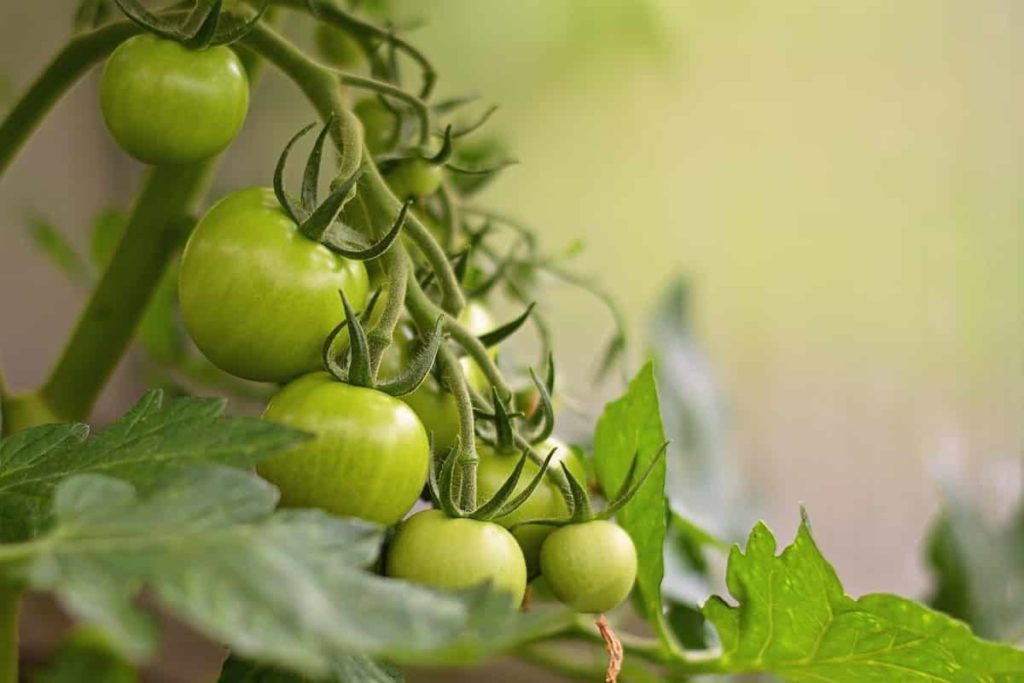
Marketing and profit analysis of Mr. Ramesh’s farm
The total one-time cost of Mr. Ramesh’s farm is 16 lakh rupees, including the plants, polyhouse, and other utilities. And Mr. Ramesh says that he gets a profit of nearly 25 rupees per kg as he sells his vegetables at his outlet. So he suggests farmers make a way to sell their vegetables directly to customers, resulting in huge profits. Especially there is a high demand for organic vegetables in the market, and he advises the farmers to use this demand to grow organic vegetables via polyhouses.
Mr. RameWhile harvesting, sh’s farm can produce approximately 600 kgs of organic vegetables while he harvests twice a week. This means he produces a yield of a minimum of 1000 kg per week. When this yield is sold in his outlets in the city for 25 rupees kg, he gets nearly one lakh rupees per week. This means his income per month is almost one lakh rupees. If you erase the running investment, which is 5 rupees per kg, he invests nearly 20,000 rupees per month. If you erase this, Mr. Ramesh gets a profit of almost 85000 rupees per month from polyhouse farming.
He suggests young farmers enter these advanced farming practices and says that the future lies within this technology. In the coming days, there will be a high demand for polyhouse farming, and if you start now, you will be ready to produce the needed yield in the market and earn high profits, says Mr. Ramesh. In this way, Mr. Ramesh is now a proud owner of his polyhouse farm, making huge profits by cultivating plants in the polyhouse.
- Economical Aquaculture: A Guide to Low-Budget Fish Farming
- 15 Common Planting Errors That Can Doom Your Fruit Trees
- How to Make Houseplants Bushy: Effective Tips and Ideas
- Innovative Strategies for Boosting Coconut Pollination and Yield
- Pollination Strategies for Maximum Pumpkin Yield
- The Complete Guide to Chicken Fattening: Strategies for Maximum Growth
- Natural Solutions for Tulip Problems: 100% Effective Remedies for Leaf and Bulb-Related Issues
- Revolutionizing Citrus Preservation: Towards a Healthier, Greener Future
- Natural Solutions for Peony Leaf and Flower Problems: 100% Effective Remedies
- Maximizing Profits with Avocado Contract Farming in India: A Comprehensive Guide
- Natural Solutions for Hydrangea Problems: 100% Effective Remedies for Leaf and Flowers
- The Ultimate Guide to Choosing the Perfect Foliage Friend: Bringing Life Indoors
- From Sunlight to Sustainability: 15 Ways to Use Solar Technology in Agriculture
- The Ultimate Guide to Dong Tao Chicken: Exploring from History to Raising
- The Eco-Friendly Makeover: How to Convert Your Unused Swimming Pool into a Fish Pond
- Mastering the Art of Delaware Chicken Farming: Essentials for Healthy Backyard Flocks
- 20 Best Homemade Fertilizers for Money Plant: DIY Recipes and Application Methods
- How to Craft a Comprehensive Free-Range Chicken Farming Business Plan
- Brighten Your Flock: Raising Easter Egger Chickens for Beauty and Bounty
- How to Optimize Your Poultry Egg Farm Business Plan with These Strategies
- Subsidy for Spirulina Cultivation: How Indian Government Schemes Encouraging Spirulina Farmers
- Ultimate Guide to Raising Dominique Chickens: Breeding, Feeding, Egg-Production, and Care
- Mastering the Art of Raising Jersey Giant Chickens: Care, Feeding, and More
- Ultimate Guide to Raising Legbar Chickens: Breeding, Farming Practices, Diet, Egg-Production
- How to Raise Welsummer Chickens: A Comprehensive Guide for Beginners
- How to Protect Indoor Plants in Winter: A Comprehensive Guide
- Ultimate Guide to Grow Bag Gardening: Tips, Tricks, and Planting Ideas for Urban Gardeners
- Guide to Lotus Cultivation: How to Propagate, Plant, Grow, Care, Cost, and Profit
- Agriculture Drone Subsidy Scheme: Government Kisan Subsidy, License, and How to Apply Online
- Ultimate Guide to Raising Araucana Chickens: Breed Profile, Farming Economics, Diet, and Care
- Bringing Hydroponics to Classroom: Importance, Benefits of Learning for School Students
- Ultimate Guide to Raising Polish Chickens: Breed Profile, Farming Economics, Diet, and Care
- Ultimate Guide to Raising Australorp Chickens: Profile, Farming Economics, Egg Production, Diet, and Care
- Silkie Chicken Farming: Raising Practices, Varieties, Egg Production, Diet, and Care
- Sussex Chicken Farming: Raising Practices, Varieties, Egg Production, Diet and Care